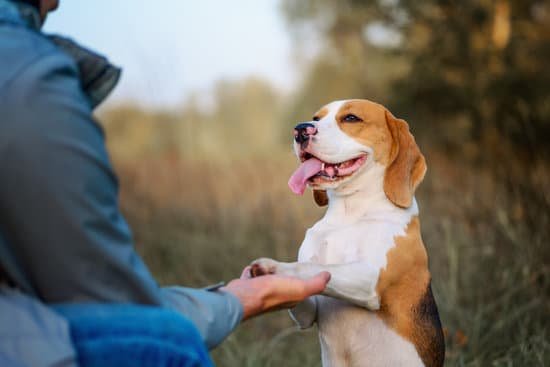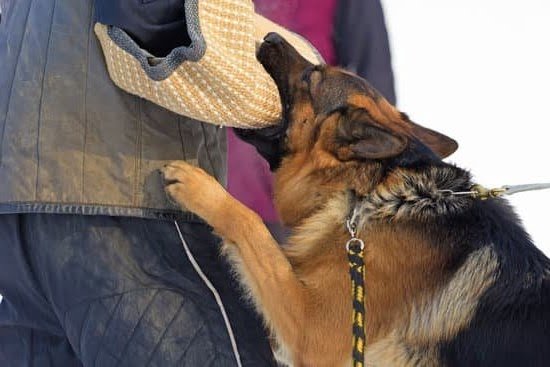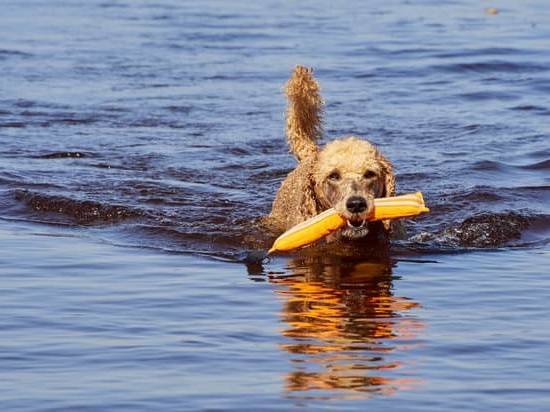Flying with a service dog in training can be a unique and rewarding experience for both the handler and the canine companion. It is essential to understand the importance of proper preparation and adherence to guidelines when traveling with a service dog in training. This article will provide valuable insights on how to navigate air travel successfully with your service dog in training, ensuring a smooth and stress-free journey.
Service dogs in training play a crucial role in assisting individuals with disabilities, providing support and companionship throughout their daily lives. When it comes to flying, these dogs undergo specific training to handle the challenges that come with air travel, making them well-equipped for the journey ahead. Understanding the significance of flying with a service dog in training is vital not only for the well-being of the dog but also for ensuring a positive experience for everyone involved.
From gaining insight into legal requirements and airline policies to preparing your service dog in training for the flight, this article will cover all aspects of flying with a service dog in training. By following proper procedures, such as notifying the airline and packing essential items, you can create a safe and comfortable environment for your furry companion during air travel.
Stay tuned to learn valuable tips and guidelines for navigating airports, security screening, and in-flight etiquette with your service dog in training.
Benefits of Flying With a Service Dog in Training
Flying with a service dog in training can provide numerous benefits for both the handler and the dog itself. One of the main advantages is the opportunity to expose the service dog in training to various environments, sounds, and situations that they may encounter in their future working life. Airports are bustling places with loud noises, crowds, and different smells, which can help desensitize the dog to distractions and improve their socialization skills.
Another benefit of flying with a service dog in training is the bonding experience it creates between the handler and the dog. Traveling together requires teamwork, communication, and trust, which are essential components of a successful service animal partnership. The shared experiences during air travel can strengthen the bond between the handler and their canine companion, leading to better cooperation and understanding.
Additionally, flying with a service dog in training allows both the handler and the dog to practice navigating through new environments and situations. This real-life training scenario can help identify any areas that need improvement or additional training, enabling the handler to address any issues proactively.
It also provides valuable experience for the service dog in training to learn how to remain calm and focused amidst new challenges, ultimately preparing them for their future role as a working service animal.
Legal Requirements and Airline Policies for Flying With a Service Dog in Training
Flying with a service dog in training comes with certain legal requirements and airline policies that owners need to be aware of before heading to the airport. The Americans with Disabilities Act (ADA) recognizes service dogs as necessary companions for individuals with disabilities, including those in training. However, it is essential to understand that service dogs in training may not have the same public access rights as fully trained service dogs.
When it comes to airline policies, each carrier may have specific rules and regulations regarding flying with a service dog in training. It is crucial to check with your chosen airline well in advance to ensure compliance with their guidelines. Some airlines may require documentation stating that your dog is indeed in training to become a service animal, while others may have additional forms or requirements.
While the ADA provides overarching protection for individuals with disabilities and their service animals, it is also important to note that different states or countries may have varying regulations regarding traveling with service dogs in training. Before embarking on your journey, make sure to research any local laws at your destination to avoid any unexpected issues during your travels.
| Legal Requirements | Airline Policies |
|---|---|
| Understanding ADA regulations for service dogs in training | Checking specific guidelines of chosen airline |
| Researching local laws at the travel destination | Obtaining necessary documentation for flying |
Preparing Your Service Dog in Training for Air Travel
Traveling with a service dog in training can be a rewarding experience, but it is essential to adequately prepare your furry companion for air travel. Here are some important steps to take to ensure that your service dog in training is ready for the journey:
- Ensure your service dog is comfortable in different environments and able to remain calm in busy and noisy settings.
- Expose your service dog to the sights, sounds, and smells of an airport before the actual travel day. This can help acclimate them to the new surroundings and reduce anxiety.
- Practice going through security screening procedures with your service dog so they are familiar with the process. This includes walking through metal detectors and being patted down by security personnel if necessary.
Proper training and socialization are key when preparing your service dog for air travel. It is essential to work on obedience commands, desensitization to loud noises, and exposure to crowds so that your furry companion can navigate the airport and flight with confidence.
- Consider enrolling in a service dog training program that specifically focuses on air travel preparation. Professional guidance can help address any specific challenges or behaviors that may arise during the journey.
- Consult with a veterinarian before flying to ensure that your service dog is up to date on vaccinations and in good health for travel. This includes obtaining any necessary documentation or health certificates required by airlines.
- Bring familiar items such as a favorite blanket or toy to provide comfort and reassurance during the flight. Familiar scents can help reduce stress and make the journey more enjoyable for your service dog in training.
By taking these proactive steps, you can ensure that your service dog in training is well-prepared for air travel, allowing both you and your furry companion to have a smooth and successful flight experience.
Tips for Booking Your Flight and Notifying the Airline
When it comes to flying with a service dog in training, proper planning and communication with the airline are crucial steps to ensure a smooth and successful journey. Here are some tips for booking your flight and notifying the airline about your service dog in training:
- Contact the Airline: Before booking your flight, reach out to the airline directly to inform them that you will be traveling with a service dog in training. This will allow them to provide you with any necessary information or requirements specific to their policies.
- Provide Documentation: Many airlines require documentation for service dogs, including proof of certification or registration. Make sure to have all necessary paperwork readily available when booking your flight and arriving at the airport.
- Request Accommodations: If you have specific seating preferences or need additional space for your service dog in training, make sure to request these accommodations when booking your flight. It’s important to communicate any special needs ahead of time to ensure a comfortable experience for both you and your canine companion.
Informing the airline about your service dog in training well in advance can help prevent any last-minute issues or delays on the day of travel. By following these tips and being proactive in your communication with the airline, you can set yourself up for a successful journey with your service dog in training by your side.
Packing Essentials for Flying With a Service Dog in Training
Flying with a service dog in training can be a rewarding experience, but it also requires careful planning and preparation to ensure a smooth journey for both you and your canine companion. One key aspect of preparing for air travel with a service dog in training is packing the essential items that will help make the trip as comfortable and stress-free as possible.
Essential Items for Your Service Dog
When packing for your flight, it’s important to ensure that you have all the necessary supplies to cater to your service dog’s needs. This includes bringing along their food, water, bowls, medications (if applicable), toys or comfort items, poop bags, and any other items they may need during the journey. It’s also a good idea to pack extra supplies in case of delays or unexpected situations.
Documentation and Identification
In addition to your service dog’s essentials, you should also carry important documentation and identification for them. This may include their veterinary records, proof of training certification (if required by the airline), a copy of their vaccination records, and any necessary permits or licenses. Having these documents easily accessible can help streamline the check-in process and ensure compliance with airline regulations.
Comfort Items for Your Service Dog
Air travel can be stressful for some dogs, especially those still in training. To help keep your service dog calm and comfortable during the flight, consider packing familiar items such as their favorite blanket or bedding, a chew toy or treat dispenser to keep them occupied, and perhaps even a piece of clothing that carries your scent.
These comfort items can provide reassurance and familiarity to your service dog amidst the unfamiliarity of air travel. By being well-prepared with these packing essentials, you can help set the stage for a positive flying experience with your service dog in training.
Navigating the Airport and Security Screening With a Service Dog in Training
Flying with a service dog in training can be a unique experience that requires careful planning and preparation, especially when navigating through airports and security screenings. One of the most important steps to take before heading to the airport is to familiarize yourself with the specific guidelines and procedures set by both the Transportation Security Administration (TSA) and the airline you will be flying with.
It is essential to educate yourself on what to expect during the security screening process to ensure a smooth journey for both you and your service dog in training.
When arriving at the airport, make sure to have all necessary documentation readily available, including your service dog’s identification tags, vaccination records, and any required paperwork from a certified trainer or organization. It is recommended to have your service dog in training wear a harness or vest marked with clear identification labels as this can help streamline the screening process and distinguish them from pets or emotional support animals.
During security screenings, it is crucial to remain calm and cooperative while following instructions from TSA agents. Be prepared for additional screening procedures which may include swabbing of your hands or testing equipment for traces of explosives.
Remember to communicate clearly with TSA personnel about your service dog in training’s needs and any accommodations that may be required during the screening process. By staying informed and proactive, you can help ensure a stress-free experience for both yourself and your canine companion while traveling by air.
In-Flight Etiquette and Comfort for Your Service Dog in Training
Proper Etiquette in the Cabin
When flying with a service dog in training, it is essential to maintain proper etiquette to ensure a comfortable and stress-free experience for both your dog and fellow passengers. It is important to make sure your service dog is well-behaved and follows basic commands during the flight. Avoid allowing your dog to bark, whine, or disrupt other passengers. Additionally, keeping your service dog close to you and out of the aisle is crucial for safety reasons.
Comfort Measures for Your Service Dog
Flying can be a new and potentially stressful experience for a service dog in training. To ensure their comfort during the flight, consider bringing along familiar items such as their favorite blanket or toy. Providing them with treats or toys to keep them occupied can also help alleviate any anxiety they may feel while flying. Remember to take regular breaks during long flights to give your service dog a chance to stretch and relieve themselves if needed.
Managing in-Flight Needs
It is important to anticipate and address the needs of your service dog while in-flight. Make sure to provide them with access to water throughout the journey, especially on longer flights. Consider feeding them before boarding the plane to prevent any potential discomfort due to changes in air pressure during take-off and landing.
If your service dog requires medication, be sure to administer it at the appropriate time based on the duration of the flight. By proactively managing their needs, you can help ensure a smooth and comfortable travel experience for your service dog in training.
Dealing With Any Challenges or Issues During Air Travel With a Service Dog in Training
Flying with a service dog in training can come with its own set of challenges and issues that may arise during air travel. It is important to be prepared for any potential difficulties that may arise and to have a plan in place for how to handle them.
One common challenge that service dog handlers may face is encountering airline staff who are unfamiliar with the rules and regulations regarding flying with a service animal. It is important to be knowledgeable about your rights as a handler and the specific policies of the airline you are flying with.
Another potential issue that may arise when flying with a service dog in training is finding appropriate accommodations for your furry companion during the flight. Some airlines may have restrictions on where the service dog can be seated, or they may require additional documentation or proof of training. It is crucial to communicate with the airline ahead of time and provide them with any necessary information to ensure a smooth boarding process.
In addition, navigating through security screening at the airport can also present challenges when traveling with a service dog in training. It is important to follow TSA guidelines for screening procedures and to inform security personnel that you are traveling with a service animal.
Patience and communication are key in this situation, as security measures may take longer when traveling with an animal. By being proactive and prepared, you can effectively deal with any challenges or issues that may arise during air travel with your service dog in training and ensure a safe and comfortable journey for both you and your furry companion.
Conclusion
Flying with a service dog in training can be a rewarding and beneficial experience for both the handler and the dog. This process requires careful planning, preparation, and understanding of legal requirements and airline policies. By following the tips and guidelines provided in this article, you can ensure a smooth and successful flight experience with your service dog in training.
One of the key aspects to consider when flying with a service dog in training is to ensure that your canine companion is well-prepared for air travel. This includes familiarizing them with the airport environment, as well as practicing good behavior during flights. By following proper training protocols and acclimating your service dog in training to different situations, you can help them feel more comfortable and relaxed during the journey.
Additionally, communication with the airline and airport staff is crucial for a positive flying experience. Making sure to notify the airline about your service dog in training ahead of time, booking appropriate accommodations, and being proactive in addressing any concerns or challenges that may arise can all contribute to a successful flight.
Remember that patience, understanding, and preparation are key when it comes to flying with a service dog in training – by taking these steps, you can ensure a safe and enjoyable travel experience for both you and your furry companion.
Frequently Asked Questions
What Proof Do Airlines Need for Service Dogs?
Airlines typically require passengers traveling with service dogs to provide documentation such as a valid service dog ID card, a doctor’s letter stating the need for the service dog, and vaccination records. These documents are essential for airlines to verify that the animal is indeed a trained service dog.
How Do You Go Through TSA With a Service Dog?
Going through TSA with a service dog involves informing the security officers upon arrival at the airport that you have a service dog accompanying you. The TSA personnel will then guide you through the security screening process, which may include walking through the metal detector together or having your dog undergo additional screening if needed.
How Hard Is It to Fly With a Service Dog?
Flying with a service dog can be challenging due to various factors such as restrictions on certain airlines, limited space in cabins, and potential issues with other passengers who may not be comfortable around animals. Additionally, ensuring that your service dog remains calm and well-behaved throughout the journey adds another layer of difficulty to flying with a service animal.
Despite these challenges, proper planning and communication with the airline can help make the experience smoother for both you and your furry companion.

Welcome to the blog! I am a professional dog trainer and have been working with dogs for many years. In this blog, I will be discussing various topics related to dog training, including tips, tricks, and advice. I hope you find this information helpful and informative. Thanks for reading!





